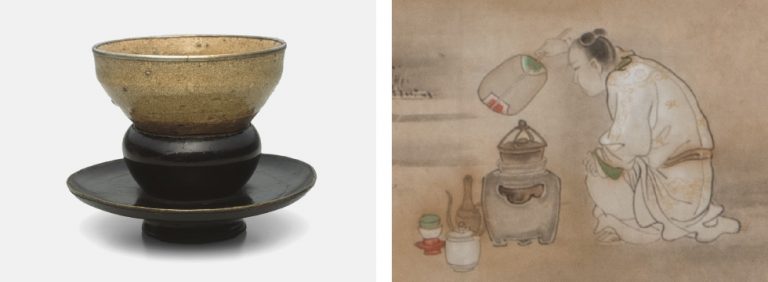The tea ceremony is one of Japan’s best-known cultural practices. Its history is deeply intertwined with that of Zen Buddhism. Zen spirituality is an essential part of the tea ceremony, and traces of the tea ceremony are often evident within Zen art. Many of the writings of the most esteemed Zen monks have survived to this day thanks to their prominent place within the tea ceremony.
While the culture of the tea ceremony has been passed down to the present without interruption, it has also changed with the times. From the tea of feudal lords, to the rustic “wabi” tea of Senno Rikyu, the elegantly simple “kirei-sabi” tea of Kanamori Sowa’s school in the Edo period (1603–1868), and the tea of modern-day tea ceremony masters, the practice of the tea ceremony has become more diverse as it has spread.
The tea ceremony as practiced at Shokoku-ji has also changed through the ages. In the Japanese Middle Ages, tea ceremonies were held here as occasions for the members of the Muromachi shogunate to appreciate imported Chinese tea accoutrements. Much later, in the Momoyama period, the 16th-century warlord Oda Nobunaga held tea ceremonies at Shokoku-ji, with the great tea master Senno Rikyu among the participants. On these and other momentous occasions, Shokoku-ji played a significant role in the formative years of what would become the modern tea ceremony. In the Edo period, the new tea ceremony that emerged from the cultural sphere of Emperor Go-Mizunoo thrived at Shokoku-ji and its branch temple of Rokuon-ji. Notable tea implements from that era that have been used by people from many different walks of life can be seen here at Shokoku-ji. We invite you to view this collection of spectacular items all under one roof at this exhibition.

Tea Ceremony-Zen and the the Elegant Pursuits (Period II)
January 11, 2020 to March 29, 2020
Locations
Shokoku-ji Jotenkaku Museum
Imadegawa-dori, Karasuma Higashi-iru
Kamigyo-ku, Kyoto 602-0898
Japan
Phone: +81-(0)75-241-0423 (Japanese only)